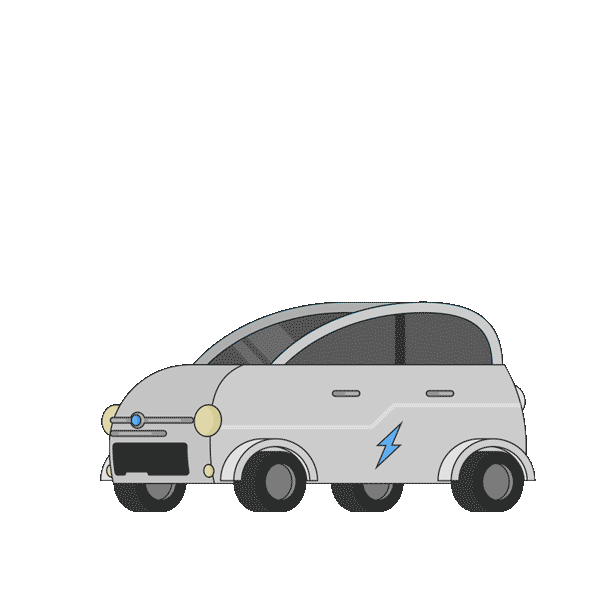Transport is Europe’s biggest climate problem, contributing 27% to the EU’s total greenhouse gas emissions. And more than half of that comes from cars and vans. The transformation that Europe’s car fleet will need to undergo is vividly illustrated in the fact that, after 20 years of CO2 reduction targets, the 2018 data revealed average emissions of new cars had actually increased in the previous year. A rise in sales of heavy sports utility vehicles (SUVs), crossovers and more powerful vehicles had stalled progress. This is despite us knowing that electric cars emit less CO2 over their lifetime than diesels – even when powered with dirtiest electricity in the EU.

The European car industry was quick to blame the decline in diesel sales – following the self-inflicted Dieselgate scandal – but T&E wasted no time in telling the true story behind the data: average CO2 emissions from diesel cars had risen while petrol car emissions remained flat. The reason? Carmakers were actively pushing sales of more powerful, bigger diesels on which they earn higher profit margins.
Passive smokers
The need to transform the fleet to a zero-emission one was underscored by mounting public concern about the air pollution crisis. Three years after Dieselgate broke, the number of dirty diesels on our roads has increased to 43 million cars and vans – and continues to grow, T&E analysis shows. Last May, the European Commission took six countries to court for failing to tackle repeated breaches of air quality limits. And research by T&E revealed that at least 350,000 dirty second-hand diesel cars mainly from Germany were exported to Poland in one year alone. In summer we demonstrated the impact of all of this: air pollution is so bad in many of Europe’s most popular cities that holidaymakers may be smoking the equivalent of up to four cigarettes on a city-break.
City authorities almost everywhere are dragging their heels on fixing the problem, but an Ipsos poll for T&E shows that two-thirds of Europeans support the introduction of low-emissions zones. T&E has been leading the charge, convening environmental and public health groups at the first ever European Diesel Summit that demanded tackling dirty diesel vehicles be a political priority for the EU.
The economy, stupid
The groundwork for the transformation to zero-emission vehicles was laid in 2018. T&E painstakingly made the environmental, economic and political cases for a new car CO2 law that would drive down emissions and rev up the European market for electric vehicles – battery or hydrogen. In the face of deceptive warnings about job losses by the car industry and the EU climate commissioner, we highlighted European Climate Foundation research showing the switch to electric will actually create over 200,000 net additional jobs in Europe by 2030. We also collaborated with the Electronic Contractors Association to show an extra 200,000 jobs would flow from the roll-out of charging infrastructure.
T&E built support among European lawmakers for ambitious car CO2 reduction targets. We made the case for MEPs to propose a strong carrot-and-stick approach for carmakers to sell more EVs. Carmakers resisted, arguing that more infrastructure would be needed before the market would take up electric cars. But, in truth, there were, on average, five electric vehicles on the road per public charging point in 2017 in Europe, more than recommended by the European Commission, according to data published by T&E and its allies in the Electromobility Platform. Furthermore we demonstrated that only 5% of EV charging happens at public charging points.
The real reason electric cars had just a 2% market share last year is that European carmakers had barely improved the marketing, choice or availability of zero emissions vehicles (ZEVs). They spent only 1.5% of their advertising budgets on ZEV models in the EU’s five largest car markets, a T&E report showed, while Europeans could only choose between 30 battery and fuel cell electric models compared to about 370 conventionally-fuelled models. Even then, 90% of sales were from just nine models and most were simply not available for sale in showrooms.
We also demonstrated that European carmakers were investing seven times more in EV production in China (€21.7 billion) than at home. T&E polling indicated 40% of Europeans said the next car they buy is likely to be electric. Indeed carmakers were holding back sales of both electric cars and more fuel-efficient upgrades of their best selling models in Europe until stricter standards kick-in, T&E research showed. The tactic allowed them to continue selling old models for as long as possible in order to both optimise profits and try to deceive regulators that they will struggle to hit the current CO2 targets.
Done deal
In the end the evidence amassed by T&E allowed MEPs to resist a rotten deal cooked up by EU governments. The European Parliament won CO2 reduction targets of 15% in 2025 and 37.5% in 2030, compared to 2021 levels – an improvement on the very weak Commission proposal of just 30%. Incentives will reward car manufacturers whose electric vehicle sales account for over 15% in 2025.
But challenges implementing that law remain: carmakers have continuously manipulated fuel efficiency/CO2 tests to meet CO2 targets. Between 2000 and 2017, the additional fuel burned because of widespread carmaker manipulation had cost drivers an extra €150 billion, T&E calculated. And when a new test for CO2 emissions was introduced, a new tactic emerged: in April T&E exposed data suggesting carmakers were inflating their CO2/fuel economy results to make future targets easier to meet. This could reduce the stringency of their 2025 CO2 targets by more than half. In this way carmakers will be able to sell fewer electric cars and more diesel vehicles. Three months later T&E obtained documents showing the Commission had uncovered evidence that all but confirmed this.
Testing times
Meanwhile, the EU rowed back on plans to allow all third parties to test vehicles’ on-road air pollution after they have been sold – a key step towards avoiding another Dieselgate. National type approval authorities were at least granted power to check new vehicles when they are in service. T&E is continuing its collaboration with Groupe PSA to develop a test that accurately measures NOx and particulate emissions in real driving conditions.
In November, just weeks before the car CO2 law was agreed, the Commission proposed in a climate strategy that Europe end carbon emissions from transport by 2050. That means combustion engine cars must be phased out in the early 2030s. That transformation requires more ambition than the car CO2 targets agreed last year, which show Europe shifting up a gear but not fast enough yet.
Other campaigns
trucks
Chunky and gluttonous vs fit and sleek. Which one do you bet on?
Planes
Loud and stingy vs silent and smooth. Which one do you bet on?
Ships
Dirty and smelly vs careful and discreet. Which one do you bet on?
Energy
Expensive and unreliable vs cheap and renewable. Which one do you bet on?



